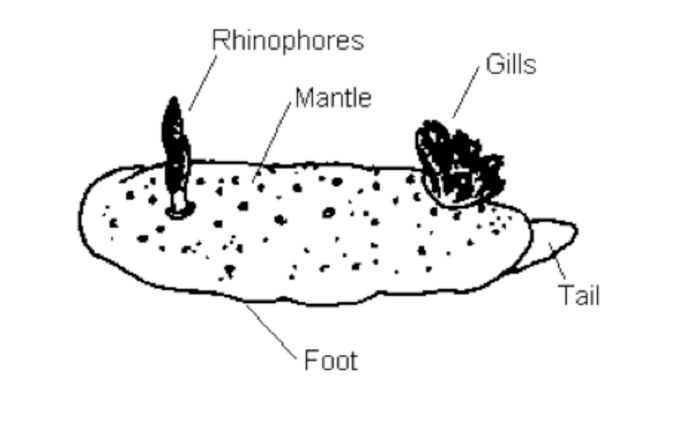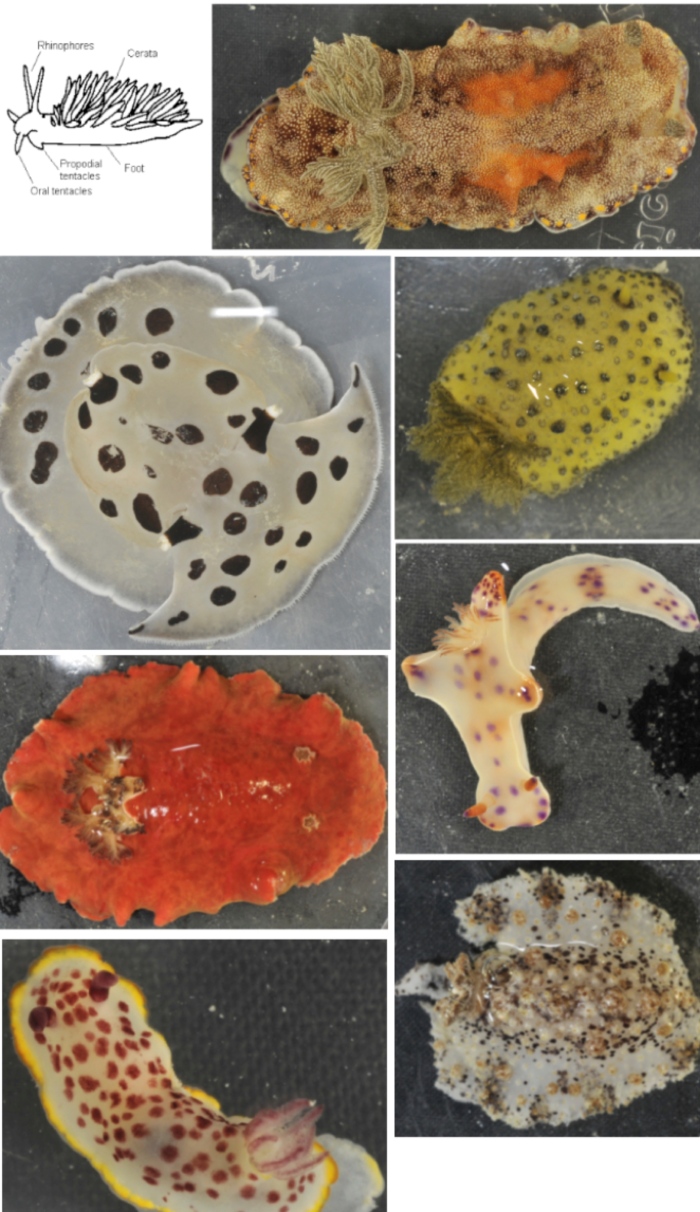We are halfway through day 10 since arriving in the study area. It is Sunday 13 December 2015. Today our focus is on completing our last tow-vid transects near the north-eastern side of Bigge Island and further exploration of the eastern side of the Maret Islands, including a final towed video transect (see map below).

My last blog was all about mud and lots of it. Mud that has been very stinky! So when I learned that many types of nudibranchs might smell scrumptious – like lemons, watermelon vanilla or flowers – I decided that today’s blog should be all about these amazing creatures.
What is a nudibranch?
The word ‘nudibranch’ comes from the Latin words for naked (nudus) and gills (brankhia). Nudibranchs were given this name because they have gills sticking out of their backs, as shown in the diagram below.

Their main body cavity, which is often brilliantly coloured, is called the mantle. Nudibranchs also have two tentacles sticking up out of their heads called rhinophores. The rhinophores help them to smell food and detect smell signals left by other nudibranchs.
It is hard to see in the diagram, but nudibranchs move using a tube foot underneath their bodies. That’s right – they only have ONE foot. Can you imagine walking on one foot? As they move, slime oozes out of their bodies leaving a slime trail. This helps them to avoid getting lost. And, a nudibranch can tell where other nudibranchs are by smelling and following their slime trails. Some scientists suggest that a scared nudibranch’s slime trail will smell different than normal– thus alerting other nudibranchs of danger.
Below are some examples of nudibranchs that we’ve seen so far on this expedition, as photographed by John Keesing of CSIRO. Examine each nudibranch and look for its body parts.
- Which nudibranch has gills that are hardest to see?
- Which nudibranch has the rhinophores that are hardest to see?
- Which two nudibranchs are showing their tube feet?

You are what you eat
Nudibranchs get their bright and varied colours from the food they eat: sponges, hydroids , bryozoans, and sometimes even corals . What nudibranchs eat can also help protect them from getting eaten by their predators.
As I told you in an earlier blog (‘Who lives in a pineapple under the sea?’), sponges contain lots of chemicals that can harm creatures that try to eat them. When nudibranchs eat sponges, they convert these chemicals into powerful toxins that can harm or kill other creatures that eat them. It is these toxic chemicals that some scientists suggest give off the aromas that smell delicious to humans – that is, if you get the chance to smell a nudibranch when it is out of water before it dies…!
Nudibranchs are also quite clever and will eat creatures that contain stinging cells – even the Portugeuse Man O’ War . The nudibranch does not digest the stinging cells or get harmed by them. Instead, the nudibranch uses them in its own body to protect itself.
Watch nudibranchs in action in the video below from the National Geographic Society
Did you know…?
- Fully grown nudibranchs can be as small as 4 mm long and as large as 600 mm long.
- Nudibranchs are both male and female at the same time!
- A scientist in 1884 observed a nudibranch for 2 weeks. Over that time, he repeatedly heard it make a sound like metal clicking on glass. Modern scientists have not detected this – yet.
- There are more than 3,000 known types of nudibranchs, with more being discovered all the time.
- Most nudibranchs only live for a few weeks, though some live for up to a year.
Thanks for reading – see you next time!
